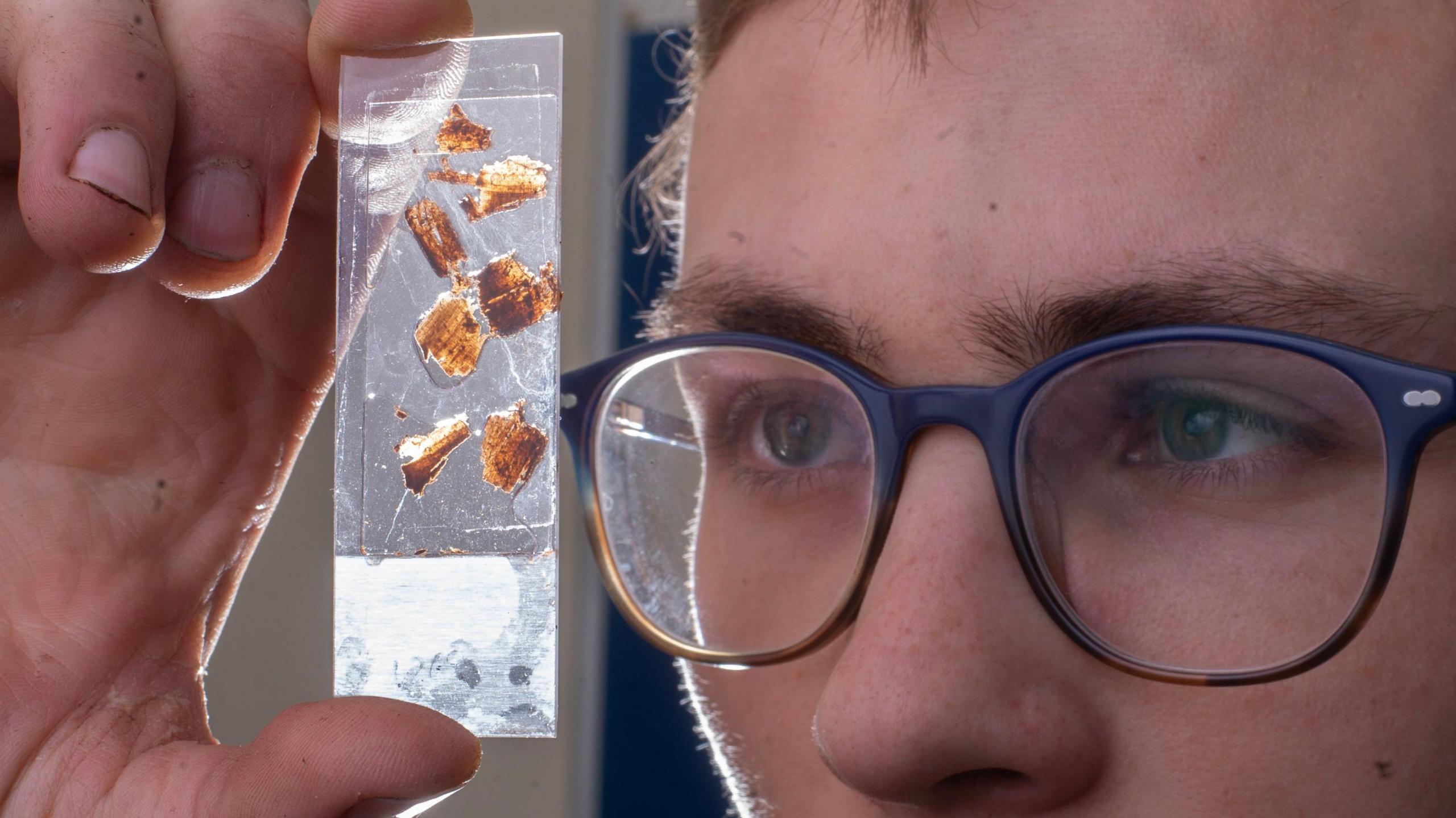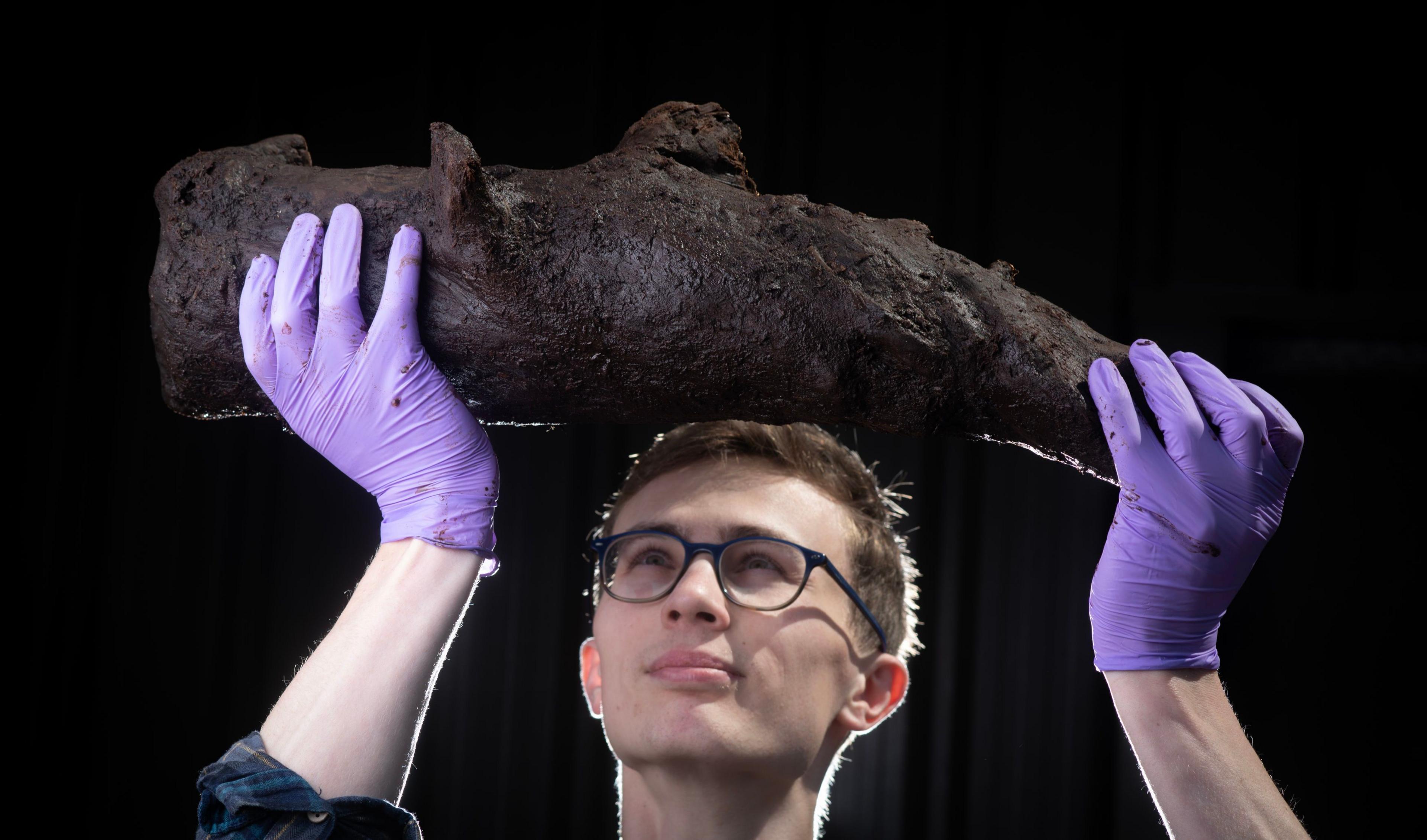Prehistoric remains area discovered on Exmoor

The remains were found preserved in the peatland “time capsule”
- Published
An area of buried prehistoric woodland, including plant and insect remains, have been discovered on Exmoor.
It was unearthed during a year-long peatland restoration project at the National Trust’s Holnicote Estate in Somerset.
Dating between the Neolithic and Bronze Ages, the remains were found preserved in the peatland “time capsule” taken from an area on the estate called Alderman’s Barrow Allotment.
Basil Stow, area ranger at the National Trust, said the discovery gave the chance to "understand the vegetation and the natural processes which helped establish this thriving wet, peaty, environment many thousands of years ago".

Woodland floor remains are thought to be up to 4,500 years old from the late Neolithic and middle Bronze Age
The "time capsule" provides a snapshot of when and how the peat formed, as well as the kinds of species of plants and insects which lived in the landscape.
Dr Ed Treasure, from Wessex Archaeology, said: “These discoveries provide a unique and tangible way of connecting with Exmoor’s past, and they illustrate the changing nature of landscapes and reveal how this impressive landscape came to be."
The discoveries include more than 100 fragments of Hydraena riparia beetles, a semi-aquatic beetle that flourishes in damp conditions and exists today, and prehistoric samples of dung beetles, rove beetles, moss mites and water scavenger beetles.
As well as this, remains from the woodland floor found fragments of trunks, small branches and twigs which were found to date from around 4,500 to 3,500 years ago during the late Neolithic and Middle Bronze Age.